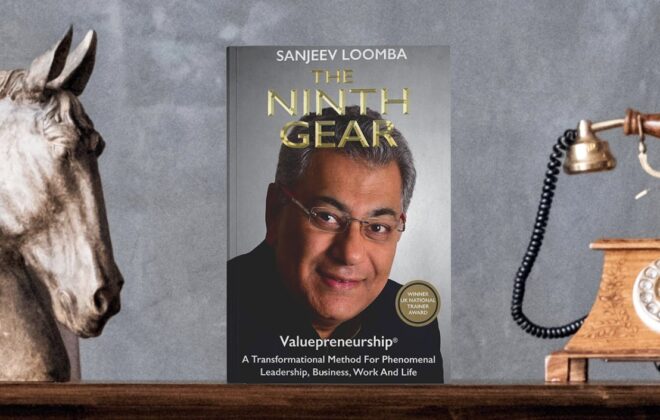The Guitar Decoder Ring by Asher Black
Featuring SIGIL – the New Language of Guitar
SIGIL for guitar players is a new language that simplifies music theory for scales, modes, and intervals.
Many of us want to decrypt the instrument and unleash our play, but the study of music, particularly guitar, is fraught with complex theorems and diagrams, rote memorization, arcane reference points, and archaic devices. Most guitar books are a rehash of tools invented centuries ago that turn the process into a slog. It's time for a new language. Meet SIGIL—the new language of guitar. Guitarists who want to improvise and compose, from novice to advanced, will find SIGIL, the guitar decoder ring, which is simple enough to keep in their heads, an accelerator for their progress. Music instructors will gain a refreshing new perspective on the fretboard. The guitar must be freed from the medieval conventions of the orchestra pit and conductor and unshackled from other instruments, like the piano, so guitar players can easily chart their own course.
You will not find chord charts, scale patterns, mode charts, wheel of 5ths diagrams, or similar traditional devices in The Guitar Decoder Ring. This is an entirely new and portable language for the instrument that works everywhere, all the time, and does all of it faster and more simply. Most of what's occurring in guitar instruction is not new. There's been very little innovation in almost 600 years (guitar tablature) — 240 if you count the first 6-string. It's time. Be skeptical—it's fine. This book will equip you with a simple, portable, 5-letter alphabet and show you how to use it in every category of learning and progress to tear up the wall charts. Advanced players will speed more interesting solos and compositions. Instructors will have a gold-standard go-to book for equipping learners at EVERY level.
The authors are a seasoned musician and thriving guitar instructor, Barry Gilman, and a relatively new musician, Asher Black, with a relevant background in logic, reasoning, history, and storytelling. The book is readable, humorous, and insightful and walks the reader through the toolset with eye-opening examples. This is guitar study re-engineered. Break through your lull or stall and free your play from the pit of worn habit.
AmazonExcerpt from The Guitar Decoder Ring © Copyright 2023 Asher Black
INTERVIEW WITH ASHER BLACK
Is there a vested interest in making music learning and instruction slow and unwieldy?
I think the vested interest is control. I certainly felt it when I started this journey. The decoder ring is the enemy of control.
The Mindless Approach: Initially, some teachers told me to learn things without asking why—just memorize now and one day I’ll get to understand how to use them. I was going through the motions but barely understood how any of it worked. “Just, just… do it. It’ll be useful later.” Some of it held, but I didn’t enjoy it much. “The fun starts later on, down the road.” But what if I want the WHY to drive the HOW? What if I learn faster by understanding what I’m doing and what I can make with it? Mindless is not how I think of my art, and I got into this to make art, at least for myself—not to serve up cafeteria orders from a menu.
The Imitation Approach: Formally trained students told me I was doing it wrong—“The proper way to learn an instrument is to study sheet music and play set pieces and one day, after at least 100 of those, executed well, if you’re lucky, you might get to compose some- thing.” This was another “one day if ”. And meanwhile, due respect to cover artists (and that’s what a guy playing Mozart at his piano is— don’t make more of it than it is), I want to make my own music. “Well, you need lots and lots of songs. That’s how you learn guitar.” I know there’s a whole school of study predicated on that—due regard for its popularity. But what if I don’t want to spend the first few years of my study effectively photocopying? You can learn to write novels or paint paintings if you copy enough of them, but jeez—when do you actu- ally get to be an author? And will it ultimately be derivative? “Sure, at first, but someday…” In its best form, of course, studying existing works is reverse engineering, but I wanted to reverse engineer the instrument to see what I could make with it, not go song by song.
The Rote Approach: Only slightly better was the geek thing of memorizing countless equations. Perhaps I’m a geek—I want to understand all of it, so none of the conversations are over my head. But I value every second of music theory I’ve learned, every nugget of data. In the end, though it mainly helped me fix some of the ways music is learned by deconstructing that information to find patterns that weren’t included in the training. Without that, it was exhausting. Study the wheel of fifths, countless formulas for locating octaves, intervals, switching modes, and all kinds of additional mediaeval torture devices. Merely taking on the fretboard, and trying to learn all the notes and intervals and then combine them into constructed chords, arpeggiations, and solo licks felt like rituals from some weird book of magic. Make your fingers into a claw and count up one snail’s wiggle to the shape of a neutered zebra.
Why is it so hard to self-study the guitar?
I keep hearing you can learn a lot from Youtube videos, but ‘a lot’ is relative. I find the process extremely frustrating. Sure, you can learn a lot of songs, or versions of them, but the important stuff is failing. Besides, you can’t ask questions. The videos are full of errors. The approaches are deeply idiosyncratic and not really aligned. I really value instruction, but Socratic in style. People think that means the teacher asking you questions. It doesn’t. It means you asking the teacher questions. That’s what I value: self-study with a facilitator who will focus on what I’m interested in today and the questions I have or problems I want to solve—the things I want to work on. I think of that as a guitar coach.
That said, there are so many crap books out there and so much rehash of other stuff that it’s frustrating and wastes a lot of time and money. But it’s not just the materials. It’s built into the way we learn music at the DNA level.
Even the terminology seems a little nuts. Play a minor third. Go ahead. Do we mean the interval called a minor third, making it part of a minor scale? Or do we mean the third in some scale is minor, meaning that we’re actually in a major scale? Do we mean simply the distance between some note and some other note, like the minor third between a perfect 5th and minor 7th? This is just the beginning of terminological confusion.
Even just limited to the physical guitar, when we say look at the fretboard vertically vs. horizontally, do we mean physically or tonally? They’re opposite things, and we collide over them all the time when collaborating.
What are we ancient scribes with the secret knowledge of how the temples are built and their relation to the stars? That’s cute and all, having it locked up in the academy or in the factory for classical music production, but why can’t the tools for making music be avail- able to everyone?
You like math. Did you study it formally?
Actually, I suck at math. It’s like being an electrician. I can wire a circuit, but it takes me three times longer than an electrician. I do math, because I think there’s got to be an easier way, I sense when it’s there, and I spot patterns quite well, and a lot of those patterns aren’t accounted for in traditional instruction. Bottom line, though, music is math. Some bro’ will say music is feeling. Everyone I admire, whether they can read sheet music or not, is doing one Hell of a lot of math when they compose and improvise. Pythagoras got this. He got that when I can do the math, I can do what I want. That’s what music is for me. It’s democratic. It belongs to everyone. Feelings happen even when you’re being lazy. For me, music is being able to do what I want. And it’s got to work. The reason it works is math.
What made you turn away from other published materials and want to write a book with Barry Gilman?
Break out the wall charts! The deal breaker was most instructional methods and materials ask me to memorize (or stare a wall charts to locate) 5 scale patterns for Ionian, 5 more for Aeolian, 5 more each for the major and minor pentatonic, and by the way there are five other modes to take on, with five scale patterns for each of those. Well, we should say diatonic modes, but there are plenty of other modes in common use, and you’ll probably want to learn those too, junior! Blues modes, jazz modes, harmonic minor, melodic minor… It’s exhausting.
The truth, which might seem refreshing but is daunting if you want a broad range, is that most guitar players learn a couple of scale patterns, maybe four or five over the course of several years, and slow down after that. So then what’s the point? “Always be learning!” Sure, sure. But does it have to be at this ridiculous pace? My suspicions were aroused when I kept asking musicians if there was a relation- ship between all of these scales, formulas, and patterns that could be summed up simply in some brief language. Is there some master pattern for all of it? Is there some language that unlocked all of it and implied the next thing? Hell, we get the whole English language from 26 letters. It stops somewhere.
I hear what people say: “Not really. This is all stuff we have left- over from ancient times or the middle ages. You have to understand the development of Western music…” It reminds me of the kids in Mad Max: Beyond Thunderdome trying to piece together the fragments of a puzzle after the apocalypse, except we not only haven’t seen the picture it’s supposed to form, but no one would recognize it any longer if we had. And yet, I could feel a pattern underneath it. A single unifying thread of language.
Barry Gilman of GuitaRealm (.com) is extremely focused on learner goals and brings an immense wealth of experience, skill, theory knowledge, and just plain curiosity (which is the father of invention) to the table. It’s a good mix for collaboration. Rather than discourage the exploration, he participated in it, and the result is a far better book than if it weren’t collaborative.
What was the aspiration behind SIGIL?
I want to see the whole fretboard at once! I want command of it. The decoder ring started out when I got tired of trying to hold the wheel of fifths in my head, because it seemed too complex to be intu- itive. The last thing I want to do when working something new out on the guitar is run look at a wall chart. Memorizing it and then USING it from memory was a slog, and there was so much other theory with yet more charts.
Just Google for five minutes on charts for guitarists and you’ll get chord charts, mode charts, interval charts, scale pattern charts— whole books of nothing but charts to process. Couldn’t they simplify this stuff and combine, so more of the heavy lifting was done by one concept? SIGIL, the guitar decoder ring, came about when I wanted a way to see the fretboard as a whole instead of a maze of twisting streets, making an A-shape when I want a C, making a C-shape when I want the octave for a D, not to mention the infernal B-string.
What is SIGIL?
SIGIL is a language for understanding the guitar. You’ll memorize it in minutes, and see it forever after, even when you look away. It’s
not another chart. I got sick of charts. SIGIL is a 5 letter alphabet that forms the basis of a language for navigating the entire fretboard, all strings, all intervals, all modes, and all chord progressions. Once you see it, you won’t be able to forget it. Like any really simple language, it’s contagious. And once you have it, you can begin playing it—yes, playing it, immediately, and the only question is how deep and far you want to go. In Star Trek terms, it’s also the universal translator.
Look, if we were just going to repackage the same mediaeval sh*t you get anywhere else, we wouldn’t be using SIGIL primarily to study, compose, and improvise music ourselves. It would just be a product. We made this, my co-author and I, to use for ourselves. We wrote this book to get it in front of other people as a basis for learning the instrument. It’s frankly Promethean. We wrote the book we wish we had all along the journey, not a flavor of the existing ones. We wrote it so anyone could easily learn this information and these insights.
Why do you call SIGIL a Promethean Moment?
I fully expect to hear criticism about how SIGIL is not the ‘ultimate’ tool and we’re not ‘gods’ of guitar and by the way where are our TikTok videos featuring tasty licks to prove we can rock? First, use it or don’t use it. For me, this is still a Promethean act. In intention (for others) and practice (for myself).
Prometheus, you’ll remember, stole fire from the gods and gave it to the rest of us. That’s what I want to do with guitar instruction and music theory. I want to steal it from the fog of ancient rubrics and the rarified prison of control represented by the academy. I want it liber- ated from the pulpit and the throne, the pit and the stick, the piano and the composer who sits at it, though of course you can use this for piano too. It’s adaptable to single stringed instruments, horns, what- ever. But I want anyone to be able to pick up a guitar and with a little work begin to create something new.
You’re Passionate About This.
I’ve got an ulterior motive. Personally, I don’t listen to much music created after 1984. It’s 80/20 in favor of the earlier stuff. From roughly 85’ onward, digital music and the playlist became the norm. Studios pushed for more hit singles, and album-based rock began to decline. Control of radio stations became more consolidated, as did control of concerts and the equipment used. Programming and sound engi- neering became increasingly dictated and dry. Increasingly compressed sound without the sag and air you find breathing in the syllables of a human language became increasingly prevalent. Music itself fundamentally changed in ways any classic rock aficionado has noticed. For me, that change hasn’t been welcome.
I don’t expect everyone to see it my way or to care about classic rock, which is really a mix of blues, progressive, folk, and other formats which I would argue became somewhat clipped, buzz-cut, and sawed off, after 1984. I’ve seen the attempts to ‘bring back’ the old vibe and sound, and they just don’t have the heart of the old stuff. I can’t help but wonder if some of that heart came from the culture of the guitar at that time.
We have more instruments in more hands than ever. Youtube videos abound, letting anyone copy and show up at guitar center the next day to play Slash’s opening riff to Sweet Child of Mine for the rush hour crowd or bang out something soulful on a factory scratched acoustic in front of the Starbucks. But I wonder if things were different when there were fewer guitars and more guitar players who had to work it out with a radio and a few lessons. You had the keys and a motor; where you took it was up to you.
I suspect we could get more of that if we had a portable language for learning— something like a decoder ring to speed up the process. Worst case scenario, we’d get more innovation faster, and in that case we might get more of the music I like as well as more that you or anyone else likes. SIGIL and the Decoder Ring are my attempt to speed up that process.
You have a background as educator and storyteller, with study in history and philosophy, but no background in music theory. Did those other things help with this book?
Everything helps. A liberal education helps. Music and history and philosophy helps with storytelling. Philosophy and teaching helps with studying music. I’ve gotten the music theory as I go. What wasn’t there, I tried to invent. Polymaths invent things. Mostly tools.
That’s what SIGIL is for my music practice. It’s a tool that frees me to improvise and compose the way I want to and pursue my art. Hell, martial arts goes into the mix too, man. I dig how learning something in karate, learning music, and learning to write fiction fit together so neatly. Sales, too. My business is helping enterprise sales teams bring home more from the hunt, and that’s an art too.
Bottom line, SIGIL frees someone up to let their feelings fly across the instrument, to express the world as they see it, if they have the heart. For me, it’s an expression of how I approach the world and a tool to express how I see it.
As with many things, I learn by experimenting, innovating, reflecting, teaching, writing and communicating, all of which interact with and order information more effectively. The natural thing is to express that in the form of some conclusions, insights, or a tool. SIGIL is that tool.
My profession is online marketing and development (10+ years experience), check my latest mobile app called Upcoming or my Chrome extensions for ChatGPT. But my real passion is reading books both fiction and non-fiction. I have several favorite authors like James Redfield or Daniel Keyes. If I read a book I always want to find the best part of it, every book has its unique value.







